One-quarter of freshwater fauna threatened with extinction
- PMID: 39779863
- PMCID: PMC11798842
- DOI: 10.1038/s41586-024-08375-z
One-quarter of freshwater fauna threatened with extinction
Abstract
Freshwater ecosystems are highly biodiverse1 and important for livelihoods and economic development2, but are under substantial stress3. To date, comprehensive global assessments of extinction risk have not included any speciose groups primarily living in freshwaters. Consequently, data from predominantly terrestrial tetrapods4,5 are used to guide environmental policy6 and conservation prioritization7, whereas recent proposals for target setting in freshwaters use abiotic factors8-13. However, there is evidence14-17 that such data are insufficient to represent the needs of freshwater species and achieve biodiversity goals18,19. Here we present the results of a multi-taxon global freshwater fauna assessment for The IUCN Red List of Threatened Species covering 23,496 decapod crustaceans, fishes and odonates, finding that one-quarter are threatened with extinction. Prevalent threats include pollution, dams and water extraction, agriculture and invasive species, with overharvesting also driving extinctions. We also examined the degree of surrogacy of both threatened tetrapods and freshwater abiotic factors (water stress and nitrogen) for threatened freshwater species. Threatened tetrapods are good surrogates when prioritizing sites to maximize rarity-weighted richness, but poorer when prioritizing based on the most range-restricted species. However, they are much better surrogates than abiotic factors, which perform worse than random. Thus, although global priority regions identified for tetrapod conservation are broadly reflective of those for freshwater faunas, given differences in key threats and habitats, meeting the needs of tetrapods cannot be assumed sufficient to conserve freshwater species at local scales.
© 2025. The Author(s).
Conflict of interest statement
Competing interests: G.R., M.L. and L.M.-T. are affiliated with commercial companies (Elimia, Fish Fondler Pty Ltd. and Mott MacDonald, respectively), but their contributions to this paper were made in a voluntary capacity. The other authors declare no competing interests.
Figures

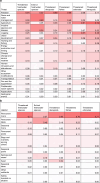

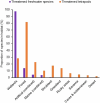
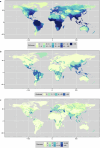

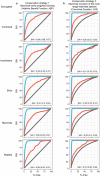
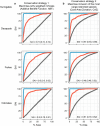
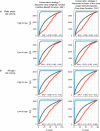
References
-
- Strayer, D. L. & Dudgeon, D. Freshwater biodiversity conservation: recent progress and future challenges. J. North Am. Benthol. Soc.29, 344–358 (2010).
-
- Lynch, A. J. et al. People need freshwater biodiversity. WIREs Water10, e1633 (2023).
-
- Dudgeon, D. Multiple threats imperil freshwater biodiversity in the Anthropocene. Curr. Biol.29, R960–R967 (2019). - PubMed
-
- Mair, L. et al. A metric for spatially explicit contributions to science-based species targets. Nat. Ecol. Evol.5, 836–844 (2021). - PubMed
-
- Hoffmann, M. et al. The impact of conservation on the status of the world’s vertebrates. Science330, 1503–1509 (2010). - PubMed
MeSH terms
LinkOut - more resources
Full Text Sources

